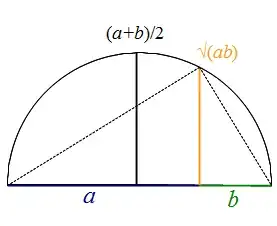I am having trouble with this problem from my latest homework.
Prove the arithmetic-geometric mean inequality. That is, for two positive real numbers $x,y$, we have $$ \sqrt{xy}≤ \frac{x+y}{2} .$$ Furthermore, equality occurs if and only if $x = y$.
Any and all help would be appreciated.
